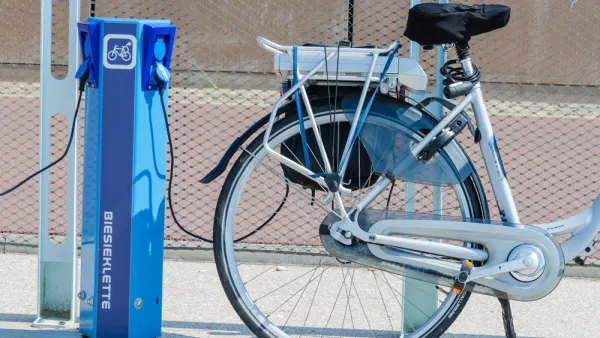With London's proposed SkyCycle and Copenhagen's successful Cykelslangen, are elevated cycletracks a viable transportation solution?
As Yoshi Silverstein writes for The Dirt, elevated cycletracks are gaining popularity as a potential transportation solution to provide bicyclists designated and safe space separate from automobiles. However, these structures do not blend modes, rather they remove cyclists from the urban fabric of a city. Proposed by Exterior Architects and Foster + Partners, the 220 km network of elevated cycletracks for London would accommodate 12,000 cyclists per hour, but cost a whopping £220 million (approx. $365 million) for just the first 6.5 km trial stretch.
On the other hand, the 235-meter Copenhagen Cykelslangen (Cycle Snake) cost $5.74 million, and tackled a crowded staircase for pedestrians that did not accommodate cyclists trying to pass through. The Cycle Snake bridge glides over the waterfront and connects the region to other pedestrian bridges. Cycle Snake addressed a problematic thoroughfare, unlike SkyCycle, which provides a drastic overhaul for an ailing transportation system.
While cities densify, logistical issues will continually arise, as Sam Jacobs reports in Dezeen, like "how can the variety of road users – pedestrians, bikes, cars, trucks – co-exist in a safe and civilized way?"
FULL STORY: Do Elevated Cycletracks Solve Problems or Just Create More?

National Parks Layoffs Will Cause Communities to Lose Billions
Thousands of essential park workers were laid off this week, just before the busy spring break season.

Retro-silient?: America’s First “Eco-burb,” The Woodlands Turns 50
A master-planned community north of Houston offers lessons on green infrastructure and resilient design, but falls short of its founder’s lofty affordability and walkability goals.

Delivering for America Plan Will Downgrade Mail Service in at Least 49.5 Percent of Zip Codes
Republican and Democrat lawmakers criticize the plan for its disproportionate negative impact on rural communities.

Test News Post 1
This is a summary

Test News Headline 46
Test for the image on the front page.

Balancing Bombs and Butterflies: How the National Guard Protects a Rare Species
The National Guard at Fort Indiantown Gap uses GIS technology and land management strategies to balance military training with conservation efforts, ensuring the survival of the rare eastern regal fritillary butterfly.
Urban Design for Planners 1: Software Tools
This six-course series explores essential urban design concepts using open source software and equips planners with the tools they need to participate fully in the urban design process.
Planning for Universal Design
Learn the tools for implementing Universal Design in planning regulations.
EMC Planning Group, Inc.
Planetizen
Planetizen
Mpact (formerly Rail~Volution)
Great Falls Development Authority, Inc.
HUDs Office of Policy Development and Research
NYU Wagner Graduate School of Public Service




























